|
||
|
||
|
||
|
||
|
||
|
||
|
||
|
|
||



Sanitation in Abergavenny
in the 19th century
Were any of your Ancestors living in the
Town of Abergavenny during the mid 19th Century?
The following extracts are from a sanitation report which was written by an inhabitant of Abergavenny (Samuel H. Steel, M.B., Lond) who, as well as giving many statistics for disease and mortality in the area, then goes on to describe the living conditions of the working classes - the dreadful condition of the houses in the many alleys, courts and yards, which were hidden away behind the main streets of this now "picturesque" country town. Some of this description is very graphic, but after reading it you will have certainly have a much better picture of the "real" Abergavenny of the 1840's.
(Numbers and details for various trades were taken from Pigot's 1842 Directory)
………
Life in Abergavenny during the 10 year period 1837-1847
The Parish and Town of Abergavenny, contains 1049 houses, and a population, according to the census of 1841, of 4953 persons.
The town lies on the main road into South Wales. It is seated on a slightly-elevated ridge of ground, nearly equidistant between the Blorenge, Sugar Loaf, and Skyrrid Fawr mountains. The river Usk, winding through the beautiful valley of the same name in a south-easterly direction, passes at the distance of a quarter of a mile on the southern side of the town.
The ridge of ground on which the town is built slopes on one side abruptly towards the river, from which it is separated by a broad, flat meadow, sometimes flooded by heavy rains; on the other, gently in a south-eastern direction down to the brook Kibby; on this slope the central and most important streets are situated. The ruins of the Castle occupy the southern and narrowest extremity of the ridge. The Kibby Brook rises in the Sugar Loaf mountain at a considerable elevation, takes a south-easterly course, passing through the north-east past of the town, where it serves as a common sewer; at the easy end of the town it joins the Gavenny, another brook flowing from the north-east, and the two, very shortly after their junction, empty themselves into the river Usk.
………
A Description of the Town Wards
High Street and Cross Street Wards form the leading streets, and are inhabited almost entirely by well-to-do tradesmen: many of the houses have gardens or open spaces behind, especially those in Cross Street. This latter street has also a good fall, and is broad and open; High Street is more confined.
Butcher Row Ward, though the residence of many respectable tradesmen, is close and narrow; the houses are badly built, with, at best, only small yards behind them; they are ill supplied with sewerage and other means of removing refuse. Flannel Street, the chief street in this ward, abounds with butcher's shops.
Rother Ward adjoins Butcher Row, but in most respects it is better situated for health; the houses on one side of the main street are good, and open behind to gardens. A small part only of this ward is inhabited by poor people, but this part is very defective.
Frogmore Ward is the largest in the town, and a very considerable proportion of the houses it now contains have been built within the last ten years, and these are chiefly occupied by respectable mechanics and others of the working class; most of them, though still defective, are better than the generality of mechanics' houses in the older part of the town. Frogmore Street itself contains many houses of the worst description. The site of this ward is partly level and partly sloping; it has a western aspect, and is generally tolerably dry. The recently-built houses have no water except what is obtained from wells.
Monk Street Ward, which includes Ireland Street, is of a very mixed character; it contains many good and well-built houses, well situated for water, which form the main street; but it also includes some of the worst and dirtiest lanes and alleys in the town, inhabited by prostitutes and others of the most depraved class.
Mill Street and Tudor Street Wards, at opposite extremities of the town, are both inhabited almost exclusively by working people. The sanitary condition of Mill Street is decidedly the worst; it is situated on the low, flat, and rather damp ground beneath the Castle Hill, with an eastern aspect, very deficient sewerage, ill supplied with water, and the air contaminated by the Kibby (Brook) and various other nuisances.
Tudor Ward, though dirty, ill-built, and un-sewered, has the advantage of a western aspect, sloping ground, and a main from the water-works.
………
Trades and Wages
The population consists partly of mechanics; such as masons, carpenters &c. and partly of agricultural labourers. Wages are tolerably good; those of the former class varying from 3s. to 4s. per diem; of the latter from 10s. to 14s. per week, according to the constancy of employment and the season of the year. Shoemakers make up the largest body of mechanics in the town. Shops of all kinds are good; there is also a good market; and an extensive trade in candles, groceries, shoes, and other articles, is carried on with the adjacent iron district.
Rents paid by the working classes
The rents of mechanics' houses vary considerably; as a general rule, the worse the house, the higher the proportional rent.
Traitor's Lane - Two shillings a week is paid for the miserable tenement of two rooms, 19 feet square.
Price's Yard - are let by mortgagee of the property at one shilling per week each, and the owner charges one shilling more for a miserable bedstead and table, scarcely worth the week's rent.
Other Courts - One shilling and sixpence, one shilling and ninepence, and two shillings, or more, are paid per week for two-roomed houses.
Grosfield - The rents of comfortable mechanics' houses with a good living room and a small back kitchen on the ground floor and two good bed-rooms, vary from £6 to £6.10s. per annum.
…….
Mortality
Although it is clear that this locality possesses, in an eminent degree, every advantage for the maintenance of health and the prolongation of human life, let us see whether the registry of mortality confirms this conclusion.
The following results are deduced from information gathered for the years 1837-1847.
Average for the whole of England - 1 death in 46 persons living
Liverpool (most unhealthy town in England in 1838) - 1 in 31
Leeds (in 1838) - 1 in 37
Lancashire (most unhealthy county) - 1 in 37
London - 1 in 39
Birmingham (in 1838) - 1 in 40
Abergavenny - 1 in 42
Monmouthshire - 1 in 45
Part of Surrey (best return in England) - 1 in 55
Age at Death: (Registration Districts)
Manchester - 50.7% under 5 years old; 12.5% over 60 years old
Leeds - 49.1%; 14.6%
Bethnal Green - 48.4%; 18.5%
Exeter - 39%; 23.6%
Marylebone - 38.7%; 19.3%
Rotherhan - 38.2%; 20.9%
Abergavenny - 38%; 23%
York - 36.4%; 26.1%
Builth, Brecknock, Crickhowell & Hay - 35.4%; 26.5%
Truro - 34.2%; 25.3%
The mortality of the country town of Abergavenny is nearly the same as that of Marylebone, Exeter and Rotherham and is greater than that of York, Truro and the Builth district.
The average age of deceased in Abergavenny during the same period:
No. of Deaths: 36; Gentlemen, professional persons and their families …….. Av. age: 44.3 yrs old
No. of Deaths: 119; Tradesmen and their families ……. Av. age: 27.7 yrs old
No. of Deaths: 693; Mechanics, labourers &c. and their families ……. Av. age: 26.3 yrs old
Deaths in the Parishes around Abergavenny for the same period 1837-1847:
In the rural districts around Abergavenny, the annual proportion of deaths to persons living is 1 to 66 only; the total amount of deaths, 25.15% only, occur under the age of 5 years; 39.1% of the total deaths occur at upwards of the ago of 60 years and the number of deaths at the age of 90 and upwards, is twice as great in the country as in the town, although the population of this area numbers 563 less. Deaths by violence are more numerous under the age of five in the country than in the town; they are almost always caused by burns, the children being more frequently left unattended.
…….
The Sanitation of the Town
The streets, like those of all places anciently fortified, are narrow, with the exception of Cross Street, and some of the streets situated without the old wall. Courts and lanes, inhabited by the lower classes, are very numerous, and many are in a most filthy condition. The following is a description of some of them:
The Local Act orders that privies shall be cleaned only between the hours of eleven at night and five in the morning. The work is done by "night-men", and the charge varies according to circumstances. Occasionally a farmer lends his cart on condition of receiving the manure; many of them, however, refuse to soil their implements in this way. Sometimes the occupier has a hole dug in the garden, into which the contents of the cesspool are emptied.
Rother Street Ward
St John's Lane, near the centre of the town, connects Neville or Rother Street and Chicken Street. It is about eight feet wide, and is formed on one side by the backs of the High Street houses, on the other by a row of small close tenements of two stories. The pitching is very uneven, and a gutter running down the centre, with a very imperfect and irregular fall, being the receptacle of all the liquid refuse, is generally half full of dirty stagnant water. The ashes and all other filth are deposited in a heap at the Nevill Street entrance of the lane, and are removed twice a week by a farmer for manure. There is one privy in the lane, but it is private property, and usually kept locked.
Some of the trades in Nevill Street:
(extracted from the 1842 Pigots Directory)
1 Brewer
1 Cabinet Maker & Upholsterer
1 Carrier
1 Gardener & Seedman
2 Grocers & Tea Dealers
1 Hat Maker
1 Inn
1 Ironmonger
3 Maltsters
2 Milliners & Dressmakers
1 Painter, Plumber & Glazier
2 Surgeons
3 Taverns/Public Houses
1 Retailer of Beer
1 Watch & Clock Maker
1 Woolstapler
Trades in Chicken Street:
1 Baker & Flour Dealer
1 Confectioner
1 General Grocer &c.
2 Hairdressers
1 Hat Maker
1 Linen & Woollen Draper
1 Straw Hat Maker
1 Tailor
I Tavern/Public House
1 Retailer of Beer
Flannel Street or Butcher Row Wards
There are three courts. One of them, very narrow, is closed overhead by the first floor rooms of the houses on each side being built over it. It contains three small houses, with windows which do not open. Two or three dirty water tubs stand in the court, and a gutter runs down it into the street. In another court in Flannel Street, the cesspool of the privy communicates with a large ash pit; both are within yards of the house doors. When I last saw it, the ash pit was very full, and the filth from the cesspool was oozing out into the yard. Many houses in Butcher Row, and in some other parts of Rother Wards, are without any privy; and I have been informed of one instance in Butcher Row, of a cellar being used both as an ash pit and cesspool.
Trades carried on in Flannel Street:
2 Bakers & Flour Dealers
3 Boot & Shoe Makers
3 Butchers
1 Cabinet Maker & Upholsterer
1 China & Class Dealer
3 Curriers & Leather Cutters
1 Dyer
1 Eating House Keeper
3 General Grocers &c.
1 Gardener & Seedsman
1 Milliner & Dressmaker
1 Saddler & Harness Maker
2 Tailors
1 Tavern/Public House
1 Retailer of Beer
Cross Street Ward
Traitor's Lane, close behind the Market Place, is a block of eleven houses, crowded in one mass so as to render even tolerable ventilation impossible. The rooms are small and close; several of the houses are inhabited by the lowest class of the population, prostitutes and their associates. On one side of the block is a privy, without a door, the roof falling in, the front open, so that no one can pass without seeing it, the "soil" appearing above the level of the seat, so as to render use impossible. Close by the privy is a manure heap, and beyond that a slaughter-house, a yard attached to which is covered with pools of mingled water, blood, and urine. At the bottom of this yard flows the Kibby, the open common sewer of the town. In one of the houses, in which I lately attended two cases of fever, I found a family of eight persons sleeping in a room twelve feet square, the opening in the wall which served as a window being one foot square. In the room were two chamber utensils filled to the brim with soil and urine. The inhabitants of these houses have no water except that of the Kibby. In the upper room of a house in Traitor's Lane, with a window one foot square, I found a father and mother and six children sleeping.
Trades carried on in Cross Street:
1 Attorney
1 Auctioneer & Appraiser
1 Bank
1 Basket Maker
2 Bookseller, Stationer &c.
3 Boot & Shoe Makers
1 Brazier & Tinman
1 Butcher
3 Cabinet Makers & Joiners
1 Carver & Gilder
1 China, Glass Dealer &c
4 Chymists & Druggists
1 Coach Maker
1 Currier & Leather Cutter
1 Dealer in Fancy Goods
3 Fire, Ins. Offices
1 Gardener & Seedsman
1 Gig Owner for Hire
4 Grocers & Tea Dealers
3 Haberdashers
2 Hair Dressers
1 Hat Maker
2 Inns
2 Ironmongers
2 Linen & Woollen Drapers
1 Nailer
2 Painters, Plumbers & Glaziers
1 Pawnbroker
1 Porter Dealer
1 Post Office
1 Saddler & Harness Maker
2 Straw Hat Maker
1 Surveyor & Land Agent
2 Tailors
3 Tallow Chandlers
4 Taverns/Public Houses
1 Timber Merchant
3 Wine & Spirit Dealers
Tudor Street Ward
Tudor Street, which forms the most direct exit from the town towards the iron district, runs nearly from west to east. The main thoroughfare, rather more than half a mile long, is of very irregular width in some places, as the upper end of Frogmore Street, and in part of High Street, it is so narrow as barely to afford room for the passage of two vehicles. Some of the lateral streets are also very narrow; Butcher Row, a very thickly-inhabited street, does not average more than thirteen feet between the houses. The height of the houses and the direction of these streets, are such that the lower stories do not receive the direct rays of the sun for more than an hour a day at any season of the year, and free circulation of air is impossible.
Near the lower end of Tudor Street is the Pant Lane, and, joining it at right angles, a row of houses facing the street, but standing on ground several feet below the level of the roadway. The windows of these houses are small and insufficient. Behind each back door is a heap of every description of refuse. Till about a year and a half ago, there was but one privy common to this row of houses and those in the Pant Lane, altogether twelve in number, and that in so dilapidated a condition as to be totally useless. Since then two decent privies have been built; but these are not sufficient. since the number of persons who use, or ought to use them, can never be less than fifty, several of the houses being lodging houses. The cesspool is a mere open hole dug in the garden, close behind the upper house. It is seldom cleaned out, and when I saw it, it presented a most disgusting spectacle, and the stench was intolerable. The lane is always so dirty, from the foul water and filth thrown into it, as to be nearly impassable. The commissioners have recently issued an order, forbidding the deposit of ashes and solid refuse in the lane; but little improvement has resulted, as dirty water is thrown out as usual. Cases of fever are very frequent in this place. Prosser's Yard consists of eleven small and badly-ventilated houses. One privy at the upper end of the yard serves for the whole number. It is constructed of a few boards, is open in front, and unsheltered. A hole dug in the ground serves for a cesspool. The entire thing is indescribably filthy, and almost unapproachable from the stench. There are four other courts in Tudor Street, more or less objectionable. Privies insufficient, and ash pits so placed that they cannot but be highly noxious.
Trades carried on in Tudor Street:
1 Day School
1 Baker & Flour Dealer
2 Blacksmiths
4 Boot & Shoe Makers
1 Builder
8 Butchers
1 Carpenter & Joiner
1 Carrier
1 Gardener & Seedsman
4 General Grocers &c.
1 Grocer & Tea Dealer
1 Hat Maker
1 Maltster
2 Milliners & Dressmakers
1 Painter, Plumber or Glazier
2 Tailors
1 Tavern & Public House
1 Turner & Musical Instrument Maker
Trades carried on in High Street:
(extracted from the 1842 Pigots Directory)
1 Bank
2 Booksellers, Stationers &c.
1 Excise Office
4 Fire, Ins. Offices
3 Grocers & Tea Dealers
4 Haberdashers
1 Hair Dresser
1 Horse Dealer
1 Inn
3 Linen & Woollen Drapers
2 Milliners & Dressmakers
2 Saddlers & Harness Makers
1 Stone Mason
2 Tailors
2 Tallow Chandlers
1 Toy Dealer
4 Watch & Clock Makers
Frogmore Street Ward
Price's Yard. The worst court in Frogmore Street is Price's Yard, a long passage about three feet in width, and consisting of thirteen houses of the poorest description. The largest rooms do not measure more than twelve feet square, and many are much smaller. In one house there were an Irish family of eight living in one small room. The windows are miserably insufficient, some not made to open at all, others boarded up, the glass having been broken. The stone floors are full of holes, and nearly all the houses are in a ruinous condition. There is no privy, and the "soil" and refuse are thrown into an old unroofed house at the upper end of the yard. The stench, when the wind blows from this place, is much complained of by the inhabitants.
Trades carried on in Frogmore Street:
2 Attorneys
3 Auctioneers & Appraisers
2 Baker & Flour Dealer
3 Blacksmiths
1 Boarding School
1 Boot & Shoemaker
I Brazier & Tinman
1 Butcher
2 Cabinet Makers
1 Carpenter & Joiner
1 Carrier
1 China & Glass Dealer
2 Chymists & Druggists
2 Confectioners
1 Cooper
2 Corn Merchant & Factors
1 Currier & Leather Cutter
2 Eating House Keepers
1 Flax Dresser
12 General Grocers &c.
1 Haberdashers
2 Hairdressers
1 Hardwareman
2 Hauliers
2 Inns
1 Iron & Brass Founders
2 Ironmongers
1 Maltster
1 Milliner & Dressmaker
1 Millwright & Engineer
1 Painter, Plumber & Glazier
1 Pawnbroker
1 Roman Catholic School
1 Rope Maker
2 Stone Masons
1 Surgeon
1 Surveyor & Land Agent
7 Taverns & Public Houses
2 Wheelwrights
2 Whitesmiths
Monk Street Ward
In Monk Street, near the turnpike gate, is Burton's Yard, containing six dilapidated houses. The privy is very filthy, and the upper part of the yard is covered with "soil". Opposite the house doors are several very dirty and offensive pigstyes.
Ireland Street. Most of the houses in this street are small, ill ventilated, and dirty, and are inhabited by the lowest class of prostitutes and others. All refuse water is thrown out into the street, which is always very dirty, and disgusting to respectable persons.
Drew's or Whitehorse Yard, contains ten houses, most of them consisting of ground floor only; they are in very bad repair; the rooms are small, and the windows insufficient. There is one very dirty privy, the path to it leading over an ash and dung heap. An offensive drain runs down the court into the street.
Trades carried on in Monk Street:
(extracted from the 1842 Pigots Directory)
1 Day School
1 Boarding School
4 Attorneys
1 Auctioneer
2 Bakers & Flour Dealers
1 Brewer
1 Brickmaker
1 Cabinet Maker & Upholsterer
3 Carpenters & Joiners
1 Carrier by Water
2 General Grocers &c.
1 Maltster
2 Music Teachers
1 Porter Dealer
2 Rope Makers
2 Saddlers & Harness Makers
1 Stone Mason
1 Surgeon
2 Taverns & Public Houses
1 Retailer of Beer
1 Timber Merchant
2 Turners
Mill Street Ward
Lower Mill Street is a narrow, dirty, unflagged [unpaved] street, joining Upper Mill Street at a right angle, and up to this time has formed the only entrance to the town from the London Road.
Mill Street - the air admitted by the back windows and doors is polluted by the odours arising from the Kibby.
Crown Yard is a small irregular court of four houses, very confined and dirty. The Brook Kibby runs beneath the pavement, and one privy os placed over it, at the bottom of the yard; another, belonging to a public-house, at the top. In the centre, the pavement and arch of the sewer have fallen in, leaving a hole large enough to receive a hogshead. The inhabitants complain, that in hot weather, when the water in the brook is low, the stench arising from this opening is overpowering.
Whistance's Yard is a straight passage, from forty to fifty yards long, and about three feet wide. At the top is an open space covered with accumulated refuse. The uppermost house contains three rooms, two upstairs and one below, all used as sleeping rooms. Opposite, and within two feet of the door, is a ruined house, used indifferently as a privy and a pigstye; it is half full of fallen bricks, and evidently never cleaned; the stench from it penetrated the whole of the inhabited house. Of the thirteen houses in this yard, seven are either wholly or partly inhabited; the remainder are ruinous, and are used as depositories of ordure and other filth. The gutter is dirty and out of repair. A woman living in one of the houses, said that in summer the foul smell is often so great as to make them all sick and deprive them of appetite.
Trades carried on in Mill Street:
(extracted from the 1842 Pigots Directory)
1 Day School
3 Bakers & Flour Dealers
3 Boot & Shoe Makers
2 Butchers
1 Carpenter & Joiner
1 Currier & Leather Cutter
7 General Grocers &c.
1 Maltster
1 Skinner, Leather Dresser & Glover
1 Stone Mason
3 Tailors
2 Tanners
3 Taverns & Public Houses
4 Retailers of Beer
1 Woolstapler
There are many other courts in various parts of the town, most of them better than those I have described, but all exhibiting arrangements more or less defective; for instance, Wyke's Yard, in Tudor Street, one of the largest and most open in the town, has at the top an ash heap and a stable; at the bottom a double privy, the cesspool of which is emptied only when it becomes too full to be longer endurable. I observed once during the summer, the "soil" oozing out between the brick-work on the level of the pitching; the inhabitants of the house next to it had endeavoured to stop the hole with a stone and a little clay.
Total Number of Deaths in the various Wards over the ten year period 1837-1847:
Frogmore Ward - 272 (of which 111 were under 5 yrs old)
Rother Ward - 40 (of which 16 were under 5 yrs old)
High Street Ward - 42 (of which 8 were under 5 yrs old)
Cross Street Ward - 72 (of which 19 were under 5 yrs old)
Butcher Row Ward - 77 (of which 32 were under 5 yrs old)
Tudor Ward - 157 (of which 63 were under 5 yrs old)
Mill Street Ward - 204 (of which 92 were under 5 yrs old)
Monk Street Ward - 182 (of which 71 were under 5 yrs old)
Hamlets & Suburbs - 65 (of which 17 were under 5 yrs old)
Number of Deaths from contagious diseases in the two years 1845 and 1846:
(the number of cases for these years was below average)
Frogmore Ward - Small Pox 6; Scarletina 20; Measles 4; Typhus 10; Total 40
Rother Ward - Small Pox 4; Scarletina 3; Measles 0; Typhus 0; Total 7
High St Ward - Small Pox 0; Scarletina 1; Measles 0; Typhus 1; Total 2
Cross St Ward - Small Pox 8; Scarletina 2; Measles 2; Typhus 5*; Total 12
*2 of these deaths occurred in "Traitor's Row"
Butcher Row Ward - Small Pox 0; Scarletina 1; Measles 0; Typhus 3; Total 4
Tudor St Ward - Small Pox 9; Scarletina 11; Measles 1; Typhus 9; Total 30
Mill Street Ward - Small Pox 12; Scarletina 7; Measles 6; Typhus 13; Total 38
Monk St Ward - Small Pox 11; Scarletina 7; Measles 0; Typhus 13; Total 31
Hamlets - Small Pox 4; Scarletina 4; Measles 0; Typhus 2; Total 10
The Rural Parishes with which Abergavenny has been compared [in the above statistics] are inhabited almost entirely by a race of small farmers and their labourers, exposed, in consequence of the nature of their employment, to all the viscissitudes of weather, residing, many of them, in dilapidated cottages, and at a much greater distance from medical relief that the town population, An accurate idea of the comparative poverty of the two districts may be derived from the amount of Parish Relief administered to each. The average sum expended per annum, during the four years ending March 1847, was, in the Parish of Abergavenny, £1,014; in the Rural Parishes, £1,967.
The conclusion drawn from this is that although the town wards where the rate of mortality is highest are inhabited chiefly by the poor, the privations caused by poverty are not alone sufficient to account for this and that the poor sanitation and other defective arrangements are the main causes for so many deaths.
Improving mortality rates in general
The most important means for the preservation of health are the plentiful supply of air uninvited by intermixture with hurtful agents, for the purification of the blood; of water, to ensure cleanliness and freedom of action to the skin, and to afford the means of purifying houses and domestic utensils from dirt and refuse; of arrangements for the complete removal of all offensive and refuse matter; of light, without which all living things become weak and sickly; of good wholesome food; of warmth and shelter. Nearly all these requisites are extremely deficient in Abergavenny.
…….
Ventilation and whether there is room for general improvement
The courts and alleys vary much as to their capacity for ventilation. Some, as for instance, Wyke's Yard, through entered by narrow tunnels, are open at the opposite ends to fields and gardens; and when this advantage is not neutralised by some filthy cesspool or other nuisance, are better suited for ventilation than many of the streets. Others, especially in the older parts of the town, are mere narrow passages, entered by tunnels and closed at the farther extremity - little change can take place in air thus enclosed on every side. Even in the best and most healthiest quarters of the town, the houses only open behind to a dark confined yard, where the stagnant air is contaminated by emanations from the privy, ash bin, and sink. The houses of the outer streets generally possess back openings to gardens; but among the poorer classes, a heap of stinking refuse, close to the door, seems placed on purpose to obviate this advantage.
…….
The Supply of Water to the Town
Abergavenny has been supplied with water many years prior to 1794 by water-works, the town property. In 1806 leaden pipes were replaced by those made of elm-timber; a new pond-head having been constructed in 1794. The timber pipes leaked badly but were not removed entirely until 1820. The reservoir is situated about half a mile from the town, on the course of the brook Kibby, by which it is supplied with water. It is L-shaped rather indifferently constructed, and lies in a garden exposed to contamination by decayed vegetable and other matter. It averages 4.1/2 feet in depth, and is capable of containing 98,800 gallons of water. The supply from the Kibby is ample, even after long drought. The top water is 17 feet 7 inches above the highest street level, and is 68 feet above the level of Lower Mill Street. The pressure of not sufficient to force the water above the ground floors. The leading main is five inches in diameter, and extends to the top of Frogmore Street; the street mains from hence to the Market Place, and to the Byfield Lane, in Tudor Street, are 2.1/2 inches; at these points the bore decreases half an inch. Private houses are furnished with half-inch service pipes. The parts of the town supplied, are Frogmore Street, High Street, Cross Street, and Tudor Street, and Rother and Butcher Row Wards. These streets are formed into three divisions, each of which receives water for about 4 hours daily, on alternate nights, and alternate Sunday nights. The water rates charged to private houses, range from 12s. to £1 per annum; the usual sum however, is 16s. Courts are supplied by common standcocks, at rates ranging from £1.1s. to £2.2s., according t the number of houses. All public-houses are charged £1. Malthouses, breweries, and the larger inns, are contracted for specially. About 250 houses are supplied separately, and about 80 more by common standcocks - altogether 33 per cent. of the whole number of tenements in the town. …. The water is clear, soft, tasteless and inodorous.
Water may be obtained by sinking, in nearly all parts of the town; and many houses supplied from the water-works, possess also wells and pumps, the water from which, though not so pure as the pipe water, is preferred for drinking. The Grosfields, the New Road, and other newly built quarters, obtain their water entirely from their numerous wells. … There are few pumps in Mill Street and Monk Street Wards; the inhabitants of these wards use water either from the Gavenny, or from public land-springs or wells. The best of these, called the Priory Well, is near St. Mary's Church. Another useful spring is situated in a lane near the Mill Street turnpike. The other two public wells are near the bottom of Tudor Street. In addition to these sources of supply, a spring of water, rising in a field near the New Hereford Road, is conducted by a gutter down one side of Monk Street to the Kibby. Little flagged reservoirs, containing six or eight gallons each, have been made here and there in the course of the gutter, to facilitate the filling of utensils. The inhabitants of Mill Street often use the water from the Mill Pond for washing, and sometimes for cooking, or for tea, without heeding the contamination of the Kibby - an instance of the repugnance to the trouble of fetching water from a distance, always exhibited by the poor.
…….
Public Activities and Buildings
School Rooms
Most of the public school rooms are well built and well-ventilated, and have decent privies attached to them.The National School is held in a low and rather dark room, under the Cymreigyddion Hall, warmed, but not effectually, by a single small fire-place. It is expected, however, that this place will ere long be superseded by a new building which it is proposed to erect for the purpose. The Church of England Girls' School, which has been established about two years. is now held in a small low apartment, badly lighted and ventilated, and every way unfit for an assemblage of children for several hours daily. It is feared the difficulty of procuring a proper place in which to hold this school, will shortly lead to its abandonment. None of the public schools, except the Free Grammar School, have play-grounds attached; but the want of them is not felt, as the children return home as soon as they separate. The efficiency of their heating apparatus is the only doubtful question of importance regarding the other school-rooms. As a general rule, means for ensuring a complete and equable distribution of heat are not, I think, sufficiently attended to in the construction of school buildings.
Workshops
Few workshops are large or important enough to require notice, as most in-door work, except that of carpenters, Whitesmiths, &c., is done by the journeymen in their own houses. Shoemakers, who are very numerous, and tailors, nearly always take their work home.
Public Bathing
The facilities afforded for the healthful practice of bathing, by the proximity of the beautiful river Usk, are taken ample advantage of in the summer, by the younger male population. Nor has any fatal accident resulted from the custom during the last ten years, though several have occurred from the upsetting of boats. The elder males, however, and the women of the working classes, have no means of procuring water for thorough ablutions, except with more trouble than they are willing to undergo.
Lodging Houses
Houses for the reception of tramps and poor travellers are numerous in Abergavenny … The rooms are low, small, and ill-ventilated. I have seen in one of the best, seven beds contained in two small rooms, with only one window, two feet by one foot, that would open, while the fire-place was boarded up. They are subject to no restrictions as to the number of persons received, which is only limited by the area of the floor. The head policeman informs me that he has seen more than twenty persons in a small house of two rooms, the lower room so close as t be scarcely endurable, while the breath of the inmates might be seen issuing as steam from the open door. All ages and both sexes lie together indiscriminately. The women of the class using the lowest of these houses are seldom married, nor even remain long in the company of any one man; they are common to all their male acquaintances, and accompany one for a journey or two, and leave him for another. Fever and illness of all kinds are very prevalent in these places. The charge per night is generally 2d. for each person. Sometimes a family is taken in for a stay of some nights, at a smaller sum.
…….
Nuisances -
Tallow melting, tanning and slaughtering; together with state of St. Mary's Burial Ground
Many crying nuisances, such as cesspools, dung-heaps &c., have already been mentioned incidentally; others remain, which are more especially sources of public annoyance. One of these is the melting of tallow for making candles, which are largely required for use in the mining districts. The tallow chandlers each melt about once a week; and in summer, when the tallow is putrid, the smell is very diffusive and extremely disagreeable. Invalids always complain very much of the nuisance; and I have known one lady who suffered from nausea and loss of appetite whenever the process was going on.
There are two Tan-yards in Mill Street, which, of course, impregnate the air with the odours incidental to the manufacture of leather. The smell of tan is not, perhaps, in itself injurious to health, and to many persons it is not disagreeable, but the earlier processes in the preparation of leather are often offensive. The smell from the skin-yards in Mill Street, especially from heaps of the horns and hoofs left till they putrify, cannot be innocuous.
Many places, not constructed for slaughter-houses, as stables and outhouses, are nevertheless used for that purpose. They therefore afford no facilities for cleanliness, and are often much neglected. A very filthy slaughter-house and yard behind the Market Place has been already mentioned. A stable in Castle Street, used as a slaughter-house, is a great public offence. Blood and urine constantly flow from it, by an imperfectly covered drain, to the gutter in the street. A reverend gentlemen, whose house is close to this place, has been subject to most serious annoyance from maggots crawling under the door into the street, and thence into his house, in such numbers, that his servants have removed them with a shovel. The smell was so intolerable, that he and his family were often unable to take their meals from disgust. This state of things was partially remedied last summer by an order from the magistrates, that the place should be kept cleaner; but it is still very offensive, and the street gutter may often be seen flowing with mingled blood and urine. The family next door complain that they are often disturbed, at four or five o'clock in the morning, by the noise of knocking down beasts. The slaughter-houses in Tudor Street are often offensive to the passers by, and must be injurious to the health of the neighbouring houses.
The Burial Ground of St. Mary's Church has long been so crowded, that it is difficult to find a spot where a grave may be dug, without interfering with remains not yet decomposed; and it is not uncommon for the grave-diggers to meet with fragments which exhale a horrible stench after exposure to the air. Only one or two houses are close to this ground, and it is surrounded by a double row of lime trees, by which it is fenced from public observation, so that its crowded state has hitherto attracted little notice. Burial-grounds are attached to several of the Dissenting Chapels, but at present none of them are over filled.
Scavenging
The Local Act of Parliament empowers the Town Commissioners to enforce the cleansing of the causeways only, and their order requires this to be done twice a week, each house holder being responsible for his own frontage; but no pains are taken to ensure attention to the regulation. The roadways are never cleansed, except there and there voluntarily by the inhabitants; the consequence is that the dirty condition of the streets is remarked upon by every stranger, and forms a common subject of self reproach among the townspeople. …… at the present time the condition of the streets, even on a Sunday morning, bearing, as they often do, disgusting evidence of the previous night's debauchery, is disgraceful to the town.
…….
The Gas Supply to the Town
Works for the supply of Abergavenny with gas were erected in 1823 by a private individual. A contract entered into between this gentleman and the then Commissioners, accords to the former, permission to take up the public pavements at any time, either for the purpose of laying gas pipes, or for necessary repairs, and guarantees that similar permission shall not be granted to any other person for the term of 1000 years, on condition of the town being supplied with gas, gratis, for twenty public lights, and with what additional quantity might at any time required, at £2 per light per annum; the lights to be placed in whatsoever part of the town the Commissioners might think fit, and to be lighted from sunset to sunrise, from the first of October to the first of May in each year, except on the night of the full moon, and the two nights preceding and succeeding it, in each month: the works forfeited to the Commissioners, in case of neglect to fulfil any condition of the contract, after one month's notice give by them of such neglect.
This contract was fulfilled till within the last three or four years; since which time, in consequence, probably, of the works not being capable of producing the increased quantity of gas consumed, the lamps in Mill Street and the low parts of the town farthest from the works, cannot be lighted till after nine o'clock, when the shops are closed. This is considered a breach of the contract, and has given rise to much discussion between the Commissioners and the present proprietor. The Commissioners, and the inhabitants generally, complain, and with reason, both of the price and quality of the gas; and the penalties for the breach of contract are urged to induce the proprietor to lower the price. This done, the Commissioners would doubtless accede to the proposal already made to light Mill Street with oil; or would even leave it in darkness, since the new thoroughfare about to be made will obviate the Post-Office objections to its obscurity. In order to oblige the proprietor to come to terms, all the public lights (forty in number), except the twenty supplied gratis, have been extinguished; and it is probable that many of the largest consumers, most of whom are Commissioners, will give up the use of gas in their shops and houses. At present, gas is burned in all the best shops, and in the halls and kitchens of many private individuals. In some shops, argand burners are used, but ordinary fish-tail or fan burners are more common. The gas delivered is impure, and makes much smoke. No contrivance is employed to carry off the injurious products of the combustion.
The Abergavenny Gas Works were erected under the direction of a Mr. Broadmeadow, who obtained a patent for a peculiar method of purifying gas, in which the intermixture with it, of a certain portion of atmospheric air, was a leading feature: the gas also was generated in brick ovens instead of the usual iron retorts. The plan, however, did not answer the expectations of the inventor, and the common process was substituted for it. This abortive experiment, and the careless manner in which the pipes were jointed when first laid down, necessitating, after a short time, a re-examination of the whole series, were doubtless the causes of great expense to the proprietor, and obliged him to charge very highly for the supply of gas. The present price is £2.8s. per annum for small burners; for large bat's-wing burners, £3.5s. is charged. Meters are not used; a proposal to introduce them was made last year by the proprietor, but subsequently retracted without cause assigned.
…….
Charitable Institutions
The Abergavenny Dispensary, for affording out-door medical relief to the poor of the town and neighbourhood, is supported by voluntary contributions. There are three medical officers; one of whom attends to prescribe for patients, at eleven o'clock a.m. every day, except Tuesdays and Sundays. The average number of patients relieved annually, during the last five years, was 665, nearly three-fourths of whom were resident in the town. … This deserving charity is not well supported by the inhabitants of the town. The annual subscriptions do not average more than £85, a sum scarcely sufficient to supply the necessary medicines.
There are several charities for supplying the poor with clothing. The Ladies' Charity, for providing blankets and other comforts for aged and inform women, has long been useful.
The children attending certain schools are clothed by a weekly subscription required from each child, to which a sum from the funds of the school is added at the end of the year.
A General Clothing Club has also been lately established. It is well supported, and promises to be of great utility.
…….
Bibliography:
"A Report on the Sanitary Condition of the Town of Abergavenny, 1847", by Samuel H. Steel, M.B., Lond. - Google Books
"Pigot's 1842 Directory of Monmouthshire", - Gwent Archives
EPIDEMICS & SANITATION
All images unless otherwise credited are © MonGenes and may not be reproduced without permission
© MonGenes 2014
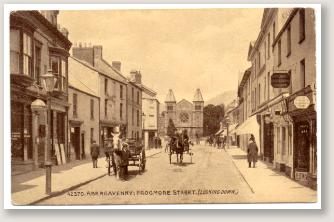
![]()
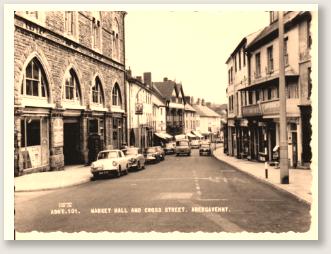
![]()
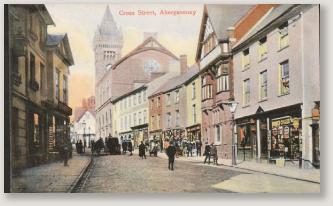
![]()
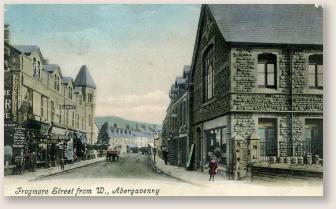
![]()
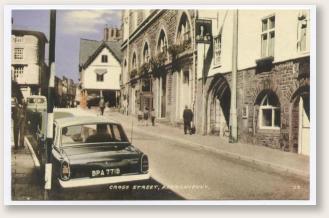
![]()


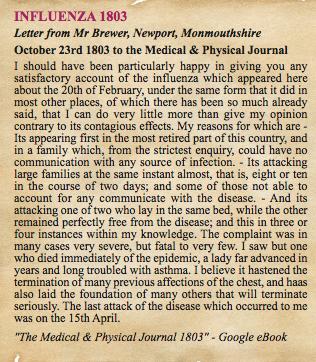
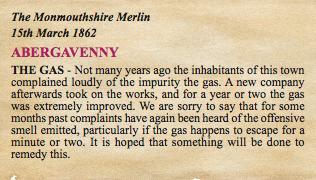
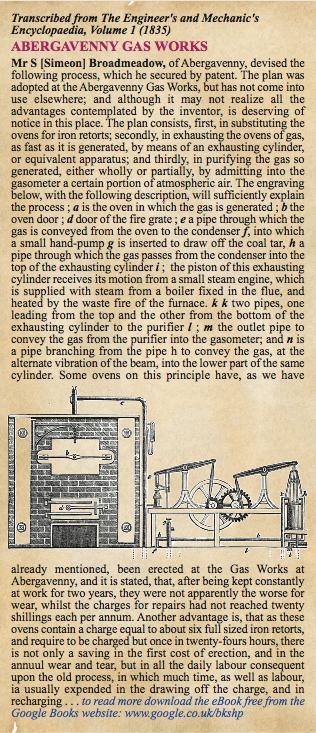
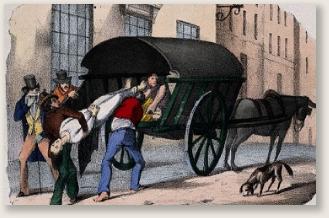
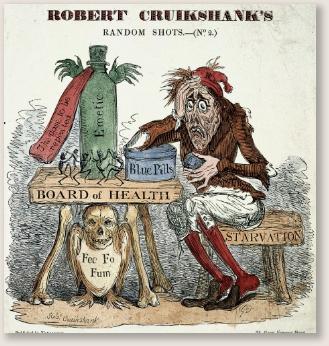
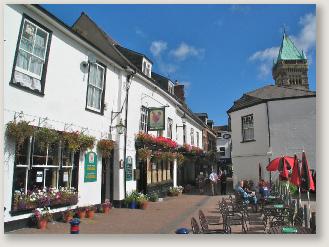
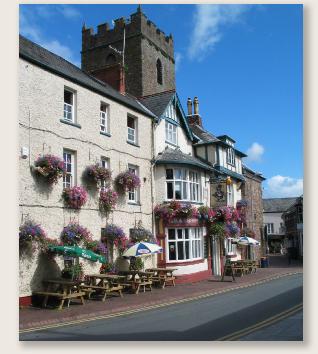
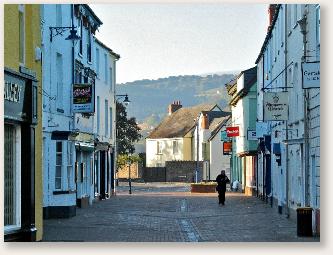
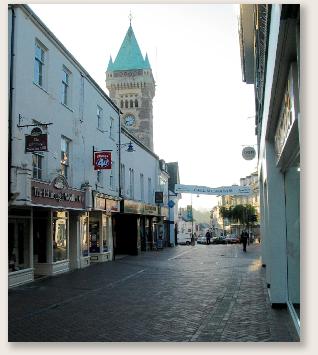

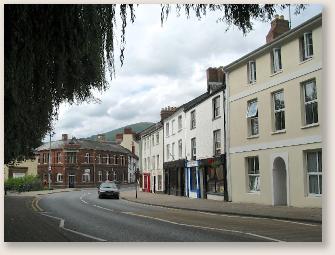
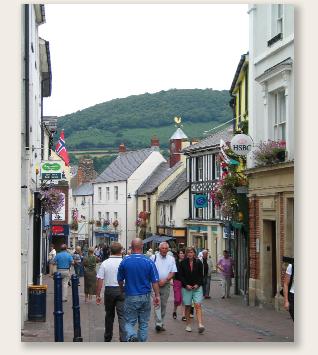


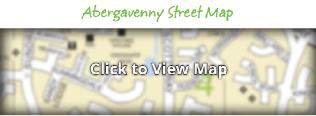

 Flag of St David
Flag of St David